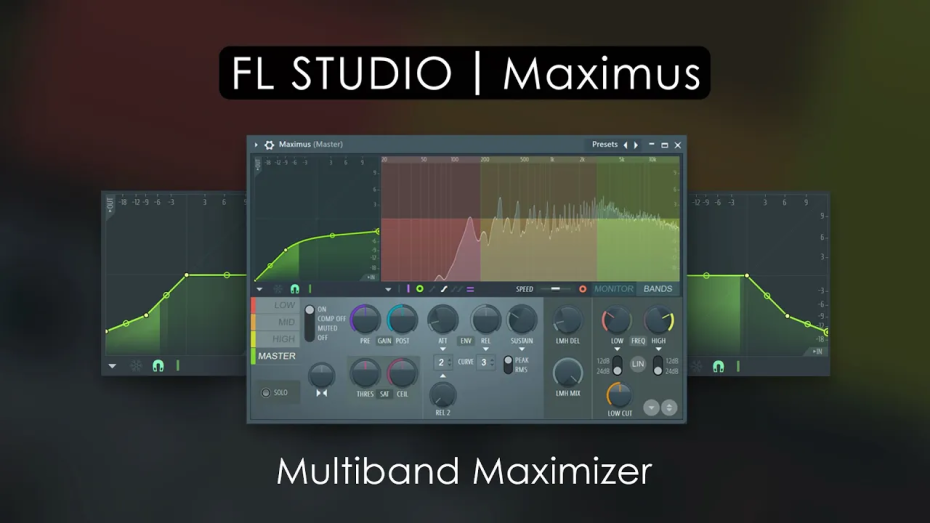In the world of music production, bass is a crucial element that adds depth, power, and energy to any track. Whether you are a beginner or an experienced producer, knowing how to create impactful bass sounds is essential. In this comprehensive guide, we will explore different techniques and tools you can use to create amazing bass sounds in FL Studio.
1. Choosing the Right Waveform
The waveform you select for your bass sound sets the foundation of its character and tone. In FL Studio, you have various options such as sine, sawtooth, square, and more. Experiment with different waveforms to achieve the desired bass texture and timbre.
2. Utilizing Oscillators
Oscillators are responsible for generating sound in synthesizers. In FL Studio, you can use multiple oscillators to create complex bass sounds. By detuning oscillators slightly, you can achieve a thicker and more powerful bass tone. Experiment with different combinations of detuning and waveshaping to find unique and interesting sounds.
3. Applying Filters and Envelopes
Filters allow you to shape the frequency spectrum of your bass sound. In FL Studio, you can use low-pass, high-pass, band-pass, or notch filters to remove unwanted frequencies and emphasize the desired ones. Additionally, envelopes are useful for controlling the dynamic behavior of your bass sound. For example, by applying a quick attack and a long decay, you can create a punchy bass sound with a sustained tail.
4. Adding Distortion and Saturation
Distortion and saturation are powerful tools for adding warmth and grit to your bass sounds. In FL Studio, you can use plugins such as Fruity Waveshaper, Fruity Blood Overdrive, or Fruity Fast Dist to introduce harmonics and drive into your bass. Be mindful of the intensity to maintain clarity and avoid muddiness.
Credit: www.practical-music-production.com
5. Layering Bass Sounds
Layering multiple bass sounds can take your productions to the next level. FL Studio allows you to stack different bass patches and blend their qualities. Combine a sub-bass for low-end depth, a mid-range bass for warmth, and a high-end bass for presence. This creates a complex and rich bass sound that fills the frequency spectrum.

Credit: www.image-line.com
6. Modulation and Automation
Modulating and automating various parameters can bring movement and interest to your bass sounds. FL Studio provides numerous modulation options, such as LFOs, envelopes, and modulation matrix. Experiment with modulating parameters like cutoff frequency, resonance, or volume to create evolving and dynamic bass sounds.
7. Experimenting with Effects
Effects are the icing on the cake when it comes to bass sound design. In FL Studio, you can use effects like reverb, delay, chorus, and flanger to add depth, space, and dimension to your bass sounds. Don’t be afraid to experiment with different combinations and settings to create unique and memorable bass textures.
8. Reference and Fine-Tuning
Always refer to professional tracks or songs that inspire you. Analyze their bass sounds and try to achieve a similar impact and character. Pay attention to how the bass interacts with other elements in the mix. Additionally, use EQ and compression to fine-tune your bass sound and ensure it sits well in the overall mix.
Frequently Asked Questions Of Creating Bass Sounds In Fl Studio: Mastering The Art
How Can I Create A Powerful Bass Sound In Fl Studio?
To create a powerful bass sound in FL Studio, start with a sine wave oscillator and layer it with a distorted wave for depth and richness.
What Effects Can Enhance The Bass Sound?
To enhance the bass sound, use effects such as distortion, compression, EQ, and stereo imaging to add depth, warmth, and presence.
Why Is Layering Important In Creating Bass Sounds?
Layering is important in creating bass sounds as it adds complexity and richness, allowing for a more dynamic and impactful sound.
What Are Some Techniques For Modulating Bass Sounds?
Techniques for modulating bass sounds include using LFOs for wobble effects, pitch modulation, and filter cutoff modulation for dynamic variation.
Conclusion
In conclusion, creating bass sounds in FL Studio is a creative and dynamic process. By utilizing waveforms, oscillators, filters, effects, and modulation, you can design unique and powerful bass sounds that elevate your music productions. Remember to experiment, trust your ears, and don’t be afraid to push the boundaries of sound design. With practice and persistence, you’ll be able to create bass sounds that make your tracks stand out.